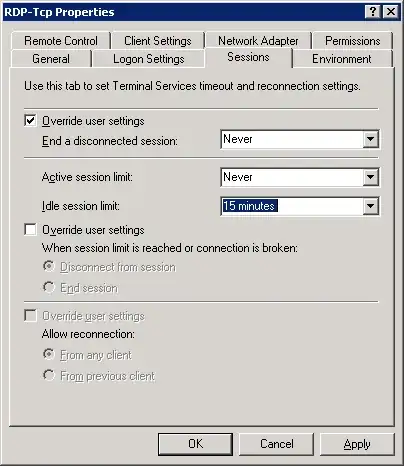From NIST SP 800-53, Rev. 3:
SC-10 NETWORK DISCONNECT
Control: The information system terminates the network connection associated with a communications session at the end of the session or after [Assignment: organization-defined time period] of inactivity.
I'm aware that a session lock (also required, in AC-11) can be applied to RDP sessions on Windows boxes through the local security policy, but I haven't found a policy that covers actual disconnect. Can this be done via a registry key or some other method?
